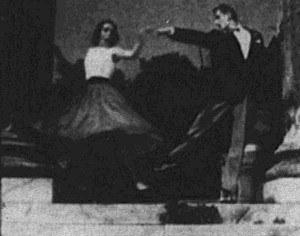
"Once Upon a Rose is romantic fantasy of a high and handsome order. In it a young gallant on a walking tour comes upon a lovely pleasance leading, at its far end, to a columned Grecian portico and the statue of a goddess. Starting to dance upon the wide stone steps, he soon hears footballs echoing behind him. The goddess has come to life and, in a series of gay modern dances, she and the boy make tender and romantic love. Then, like the princess in the fairy tale, she is again transfigured into stone—and the young man is left with only a rose to mark her memory. Now...except for brief opening and closing sequences, all of this action takes place in the single setting of the Grecian porch. To be sure, the choreography by Jimmy Inman (who also plays the young gallant) is lively and kinetic. And Mary Jo Bishop is graceful as the girl. But the film's real rhythmic flow is due in its major part to the imagination and skill of the producer, William H. Eddy. It is from his fluid camera that there blossoms this rose-scented romance which never was" PSA Journal, Jan. 1955, 49.
"Mathis Kverne returns to the winner's circle with another delightful and imaginative animated cartoon, Strokets Kavalerer—which has been translated for us "Main Street Romeos." This time we meet two boy paint brushes who try, with varying degrees of success, to win the hand of an attractive girl brush. One, a wordly boulevardier, plies her with costly presents, while the other, a real booby, offers her naive, if presumptuously intimate, gifts. When the lady has at last been won—by the booby, of course—we follow the happy couple through their marriage and the birth of their first born, a yellow brushlet of undetermined sex. Although this film may not captivate the viewers as completely as did Mr. Kverne's Muntre Streker (Ten Best 1952) that picture's promise is more than fulfilled. The animation here is smoother in all respects, the development of the story line more definite and the personalities of the individual characters more precisely realized. The result is a film of lighthearted charm which will enchant one and all. And puzzle them too, for the animated methods used by Kverne are still his own secret!" PSA Journal, Jan. 1954, 49.
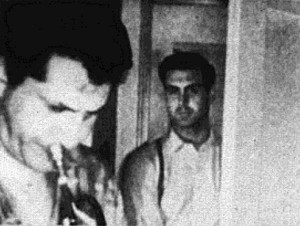
"The Horn, which hepeats should not confuse with Dorothy Baker's epic Young Man With a Horn, is nevertheless a yarn about a jazz trumpeter—and, like Miss Baker's Rick Martin, one whose life ends in death after he loses his stuff. It is a swift, savage, tender and tragic tale which Dominic Mumolo (himself a professional musician) tells here. And to its telling he has brought with amazing proficiency every resource—imagery, acting, music, speech and pace—of high motion picture drama. Herb Willis plays the part of the manic and despairing trumpeter as if to the manner born. His miming makes this difficult and decisive role wholly believable, while his voice (used not as narration, but in a musing, stream-of-consciousness flashback) is by turns tender, pathetic, searing and passionate. Musical phrases, prepared especially for the picture by Frank Worth, add immeasurably to the film's power. The Horn is a stirring and trenchant study in human emotions. If you dislike having your heartbeat aroused, you'd better avoid it. But if not...then The Horn is a movie made for you" PSA Journal, Jan. 1955, 49.

"Everybody has religion of some kind, of some creed. But to try to portray it in motion pictures takes courage in any language your faith. In The Nativity, Sal Pizzo has picture the story of the birth of Christ with unerring good taste, complete reverence and warm beauty. In it he follows old Biblical paintings as a pattern, but he animates these tableaux in a natural manner. One might wish, in fact, that he had followed them even further and used lighting to suggest halos around Mother and Babe. The long-shot model of the town of Bethlehem is believable. The bearded faces of the innkeepers are believable and, a great achievement, the costumes of the opulent kings are believable. The acting is handled with admirable restraint, the story being carried by the words of familiar Christian carols of background music. Especially well-staged are the scenes of the shepherds around their fires and of the Magi as they present their gifts to the Child in the humble manger. Mr. Pizzo and his associates have planned and executed a picture on a subject that few if any would dare to attempt. They are to be congratulated on their tender and moving triumph" PSA Journal, Jan. 1955, 50.

"What happens when a modern gentleman of advancing years advertises for a mail-order bride and tries to answer the applicant of his choice? Der Brief, (The Letter), an excruciatingly funny farce by Dr. Oscar Wurmboeck, gives us one answer to this problem, as our shy but determined hero is confronted at every turn by confusion and frustration. Everything happens - the ink spills, the fountain pen leaks, the mechanical pencil won't hold leads, the wooden ones won't sharpen, and the typewriter refuses to type - to deter our man from his course. Competent camera work, incisive direction and crisp editing serve to point up the brilliant and appealing portrayal of the unfortunate lover by Rudy Rattinger, so that Der Brief builds quickly and smoothly from laughter to hysterics. Here is pure farce in the old tradition. It is nice to welcome it back to the filmic fold after too long an absence" PSA Journal, Jan. 1955, 50.
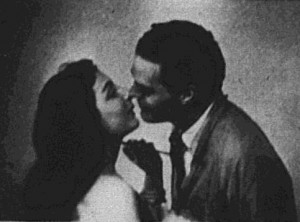
"Strangely enough, although its producers may or may not have intended it, Entre dos Rosas (Between Two Roses) is essentially an old-fashioned morality play set forth in fairly modern filmic turns. For here is a handsome young artist as the protagonist of the action. Here, in the girl of a white rose, is the embodiment of virtue; while there, in the girl of the red rose, is the embodiment of evil. And, overlooking this eternal tug of war, is the figure of Fate or Destiny. Only at the end does Entre dos Rosas turn away from the classic formula, since, with a realistic and more modern psychology than that which stirred the medieval dramatist, it refuses to resolve the ultimate struggle. To the drawing of this age-old triangle, Carlos Barrios Baron has brought stimulating though deliberate direction, while Alfredo Rubio has interpreted his ideas in monochrome imagery which is both visually creative and dramatically compelling. Although Entre dos Rosas of leaves its classic central problem unsolved. It is a striking experimental film well worthy of study by less daring movie makers" PSA Journal, Jan. 1954, 50.
"Joyous Noel by Gilbert B. Jansen Jr. is the sort of color motion picture record of an American family's Christmas that so many home-loving cameramen dream of producing - but seldom do. Undoubtedly the producer and all members of his family will treasure this film immediately. Not a great work, Joyous Noel is nevertheless an unusually good Christmas film in which all of the preparations and celebrations found in graceful family living are depicted through the activities of a young couple and their two children. Well lighted scenes, technically proficient camera work, pleasant acting by all concerned, and a background of Christmas carol music all contribute to make this a thoroughly pleasant production" PSA Journal, Jan. 1955, 50.
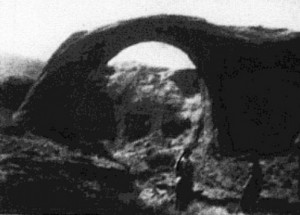
"After years of seeing the rugged Colorado River conquered by small parties of adventurers as rugged as the river itself, O.L. Tapp has produced Land of the Rock Up Over, a film in which a party of perhaps half a hundred young men and women thoroughly enjoy a mass invasion of the river country in seven large rubber rafts and only one cataract boat. The charm of Mr. Tapp's capable but perhaps over-long film lies in the companionship, fun, and excitement that stem from the very size of the exploring party. Admittedly in the river passage from Hite, Utah, to Lee's Ferry the river's most dangerous rapids have been avoided. But who cares - the group had fun! Skillfully photographed and with an interesting narrative well-recorded on magnetic stripe, the film holds audience attention by its very competence throughout its considerable length" PSA Journal, Jan. 1955, 50.
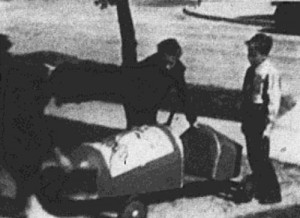
"Speedy May tells a pleasant tale about two boys who try to earn enough money to buy wheels for a new soapbox hot rod, a dreamboat which Dad has promised he will build for them if they will but supply the wheels. Failing in their financial efforts, the boys nevertheless are befriended by a neighborhood fireman who, with only two girls in his family, gives the lads four gleaming cart wheels he had been husbanding. The rest is up to Dad, and he fulfills his promise in a sparkling sequence of construction patterns filmed in his cellar workshop. Technically, this film is excellent, although its cinematic virtues are somewhat dimmed in its earlier passages by too deliberate a story pace. The appeal of the production, however, is more than assured by the sincere, natural portrayals of all hands, Harold Platt, the producer, plays his own role of father with ease and good grace. Dennis and Steve, the two youngsters, are artless and unaffected in their determined crusade for the new hot rod. And Captain Leonard Dobson as (and in fact) the fireman, tugs one's heartstrings with just the right appeal to make his son-less state seem credible. It is for his wife May that the new dreamboat - and this charmingly competent picture - are named" PSA Journal, Jan. 1955, 51.
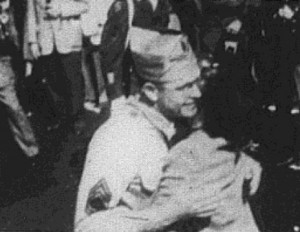
"To capture the spirit of a day-long welcome to homecoming Korean veterans is not an easy task. But Pete Delaurenti has managed it in a remarkably complete coverage in true newsreel style. Cutting from shots of the great troopship edging up to the dock in Seattle, to the crowds waiting to embrace returning veterans - the genuine and touching family reunions, the slightly bewildered beauty queens, the governors' paternal reception of a chosen native of each state and the inevitable parades - Mr. Delaurenti seems to have been endowed with multiple hands, feet and even cameras. Welcome Lane is a moving record of a difficult subject, accomplished with good taste" PSA Journal, Jan. 1955, 51.
Total Pages: 299